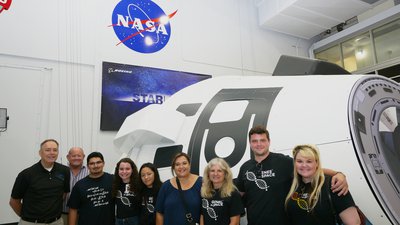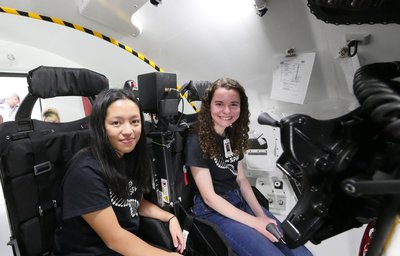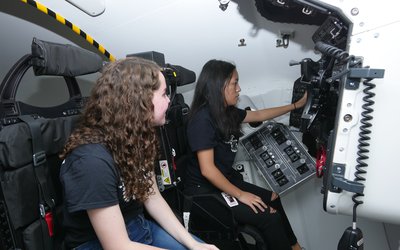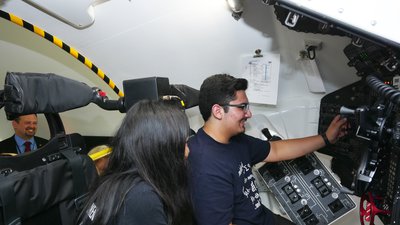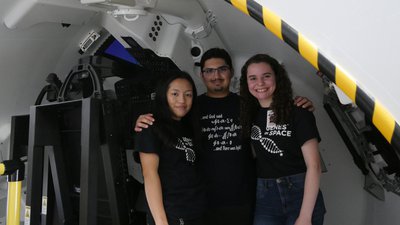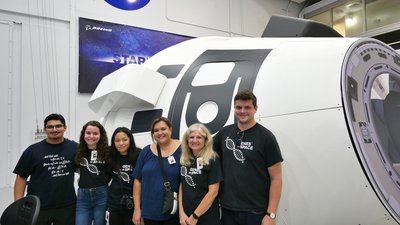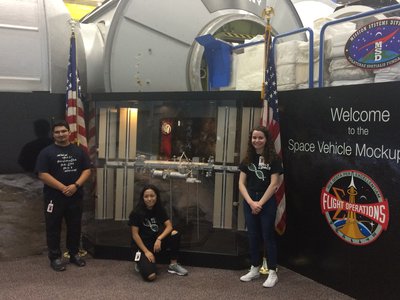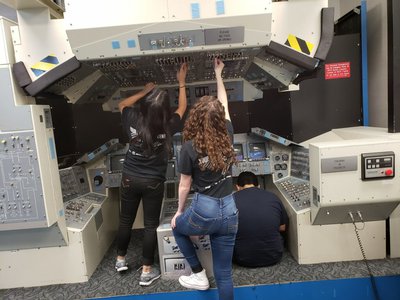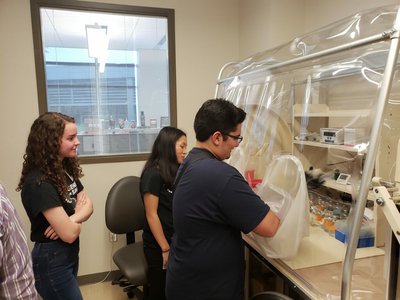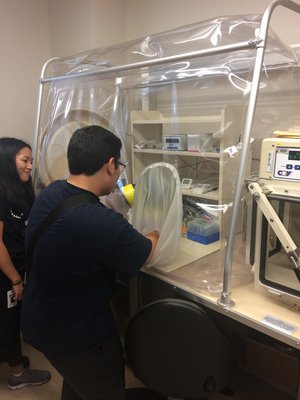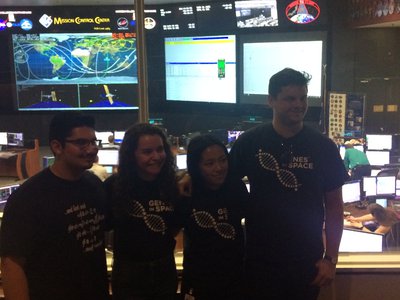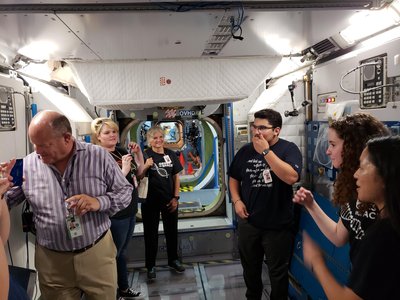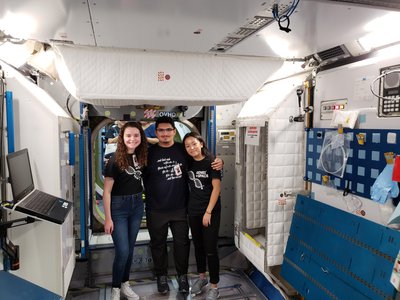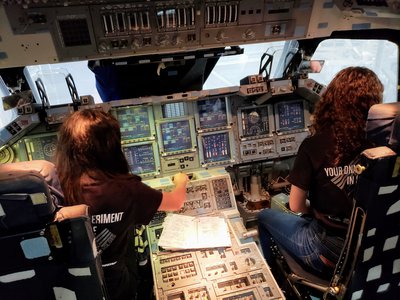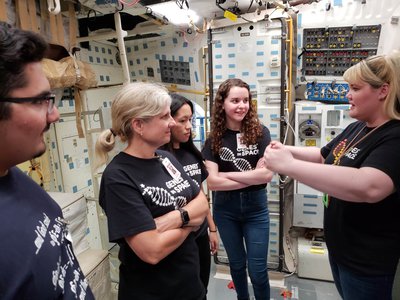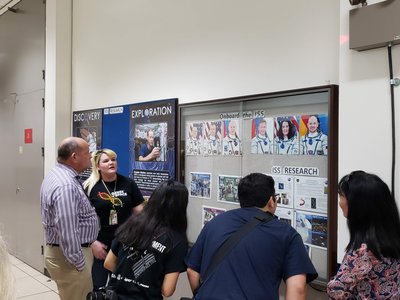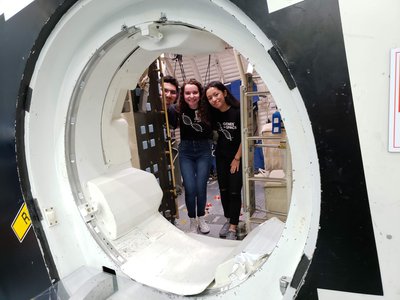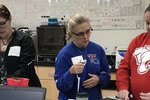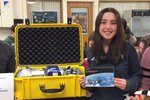Genes in Space Finalists' visit to NASA's Johnson Space Center
Guest post by John Hatch
This July, the 2018 Genes in Space finalists gathered at the ISS Research and Development Conference in San Francisco to learn more about space-based science and present their independent research projects. All five teams impressed the judges and audience with their wonderful ideas and brilliant presentations. While we here at Genes in Space often focus on the winners and their ongoing experiments, all of the talented finalists are part of our family and their presence at the conference established connections and created opportunities that will persist well beyond the competition.
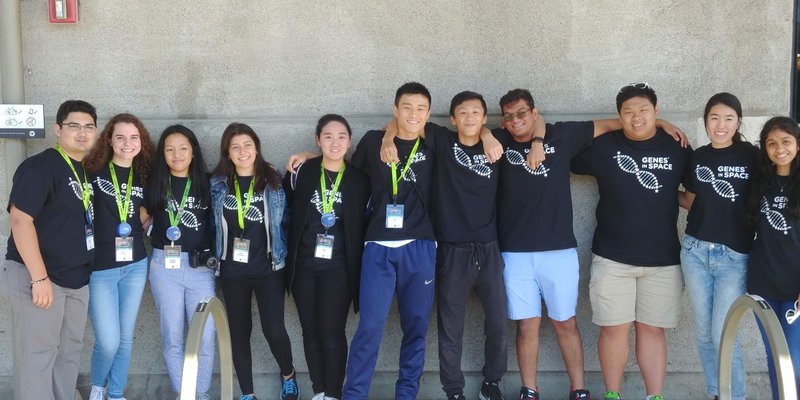
2018 Genes in Space Finalists at the ISS R&D Conference.
The team I mentored, Addison Correll, Joseph Garza, and Krishan Ubongen, are now seniors from the Design and Technology Academy (DATA) in San Antonio. They received an Honorable Mention in the 2017 Genes in Space competition, which motivated them to start work early on the 2018 competition. Their hard work paid off, and they became finalists this year with their proposal to study the unusual behavior of pathogenic microbes exposed to microgravity. At the ISS R&D Conference their passion for microbiology shone through their presentation to the Genes in Space judges.
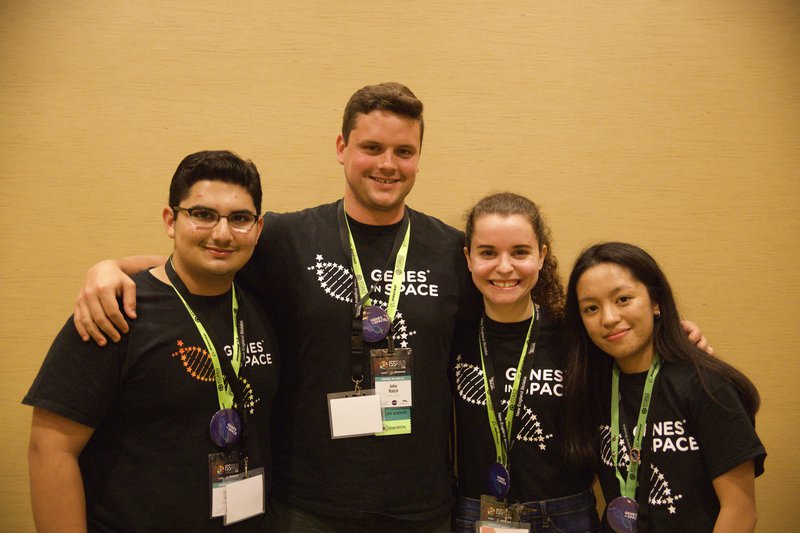
Joseph, mentor John Hatch, Addison, and Krishan at the ISS R&D Conference
The Genes in Space community extends well beyond students, mentors, and organizers. This year, Dr. Sarah Wallace, one of our judges and a microbiologist at NASA, generously offered to host some of the finalists at her laboratory at the Johnson Space Center (JSC) in Houston. Conveniently for my team, San Antonio is just a short drive from Houston. They reached out to Sarah and took her up on her offer.
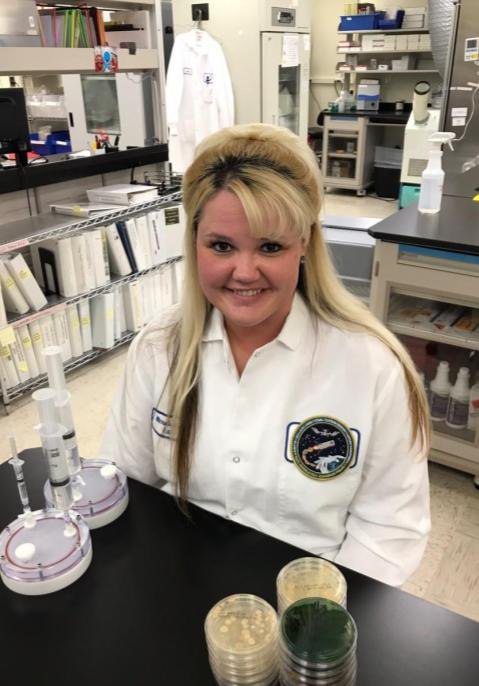
Dr. Sarah Wallace
At the end of August, thanks to my team's initiative and Sarah's generosity, we got a full, behind-the-scenes look at the inner workings of one of NASA’s most famous campuses. The team, along with two of their teachers from DATA, started the day in Dr. Wallace’s building, the JSC Biomedical Research Laboratory. After early greetings and a short chat, the group headed over to the Christopher Kraft Mission Control Center, which houses the former Apollo-era mission control room (of “Houston, we have a problem” fame!) as well as the current operations of the International Space Station Mission Control. The whole group was wowed by the live-streaming sunrise as the ISS moved out of the Earth’s shadow.
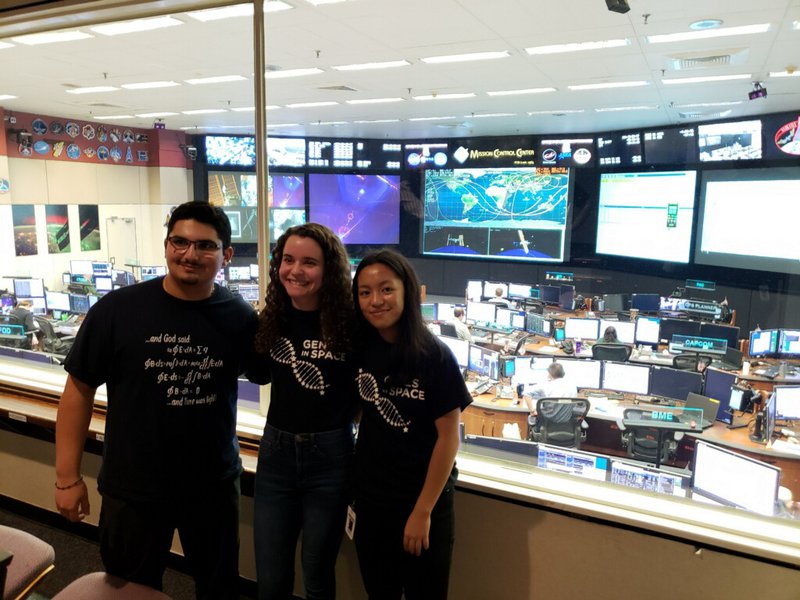
The team in Mission Control
After a lunch hosted by Genes in Space co-founder Boeing, the students moved on to sample some astronaut training activities. Most exciting was the opportunity to virtually dock Boeing’s new manned spacecraft, the Starliner, with the ISS in the same training simulator used by the astronauts to prepare for its first flights.
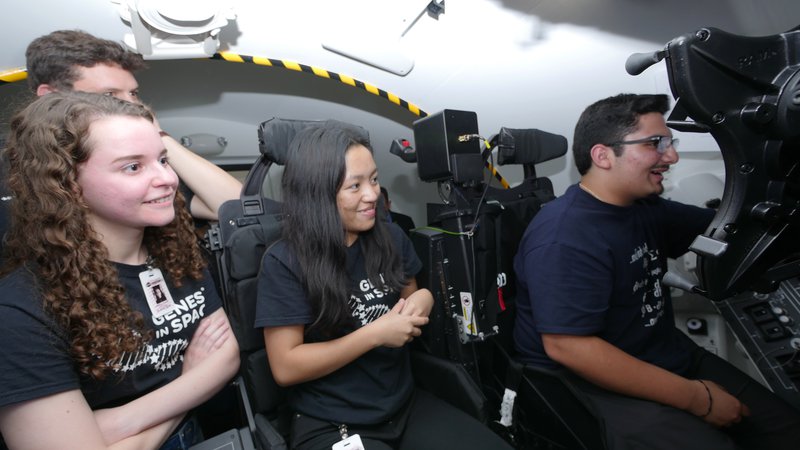
The team in the Starliner simulator
The students then returned to Dr. Wallace’s lab for a tour, where they learned about the lab’s ongoing projects. In her lab, a team works to keep astronauts safe from harmful pathogens by testing samples of cargo being shipped to the station as well as checking samples harvested by astronauts and sent back down to earth. Dr. Wallace is also centrally involved in establishing new research capabilities onboard the Station. In particular, she has been driving the testing and development of both miniPCR and minION sequencing in-flight, both of which play critical roles in the project of past and future Genes in Space experiments.
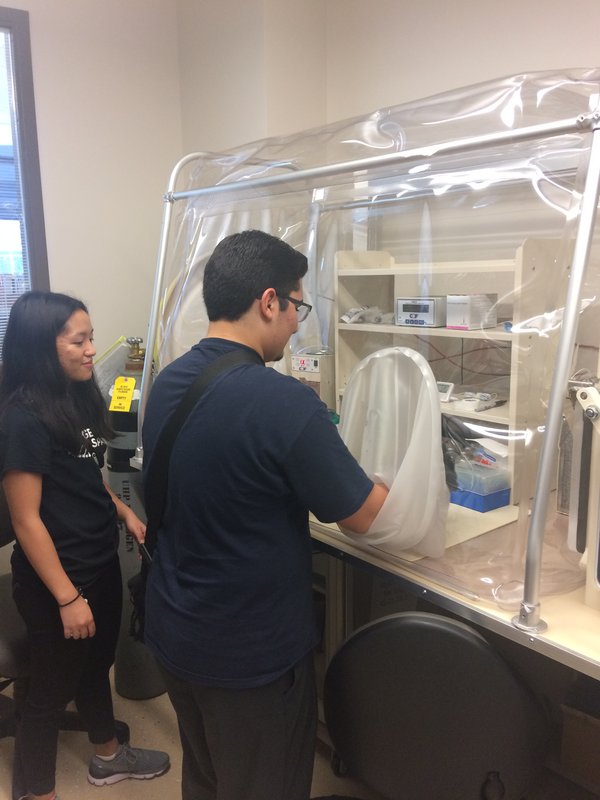
Krishan and Joseph in the Wallace Lab
Finally, the group concluded their visit at the Space Vehicle Mockup Facility, where they got to explore the Space Shuttle training simulator, a full-size replica of the Shuttle’s control room formerly used to prepare astronauts for flights aboard the Shuttle. Also in this facility are Moon rovers, a decommissioned Soyuz capsule, and full-size replicas of the various US and international components of the ISS. Needless to say, any fan of space exploration could spend days running around this huge hangar, imagining themselves on a mission to the ISS, the Moon, or even further from Earth.
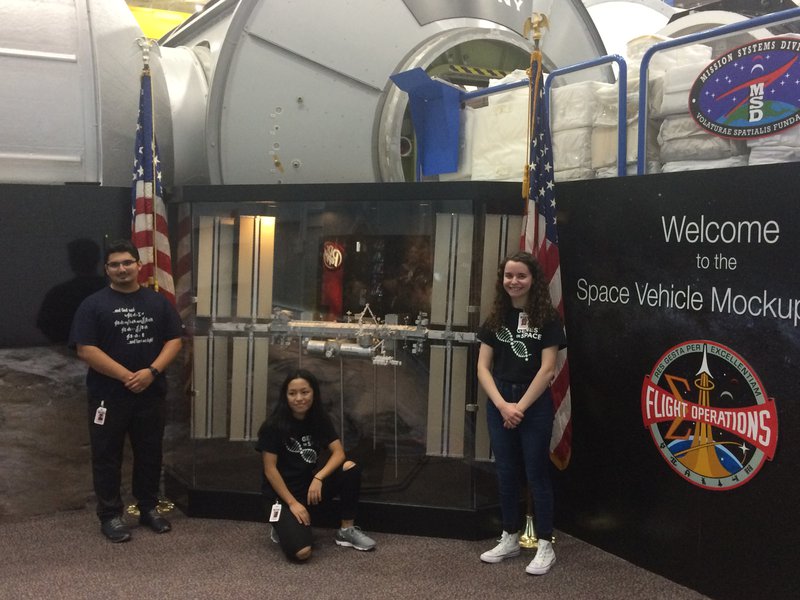
All too soon, the visit ended with Dr. William Wallace, a senior scientist with JSC’s Toxicology and Environmental Chemistry, who showed off some of JSC’s precious samples of moon dust from multiple Apollo landing sites.
This visit to JSC represents just one of the opportunities enabled by the connections and friendships that come out of the Genes in Space competition. We at Genes in Space are immensely grateful to our friends at NASA and Boeing, in particular Dr. Sarah Wallace and Scott Copeland, for their passion and enthusiasm for sharing their amazing work with the students as well as with mentors and teachers.
Check out some photos from our visit in the gallery below:

